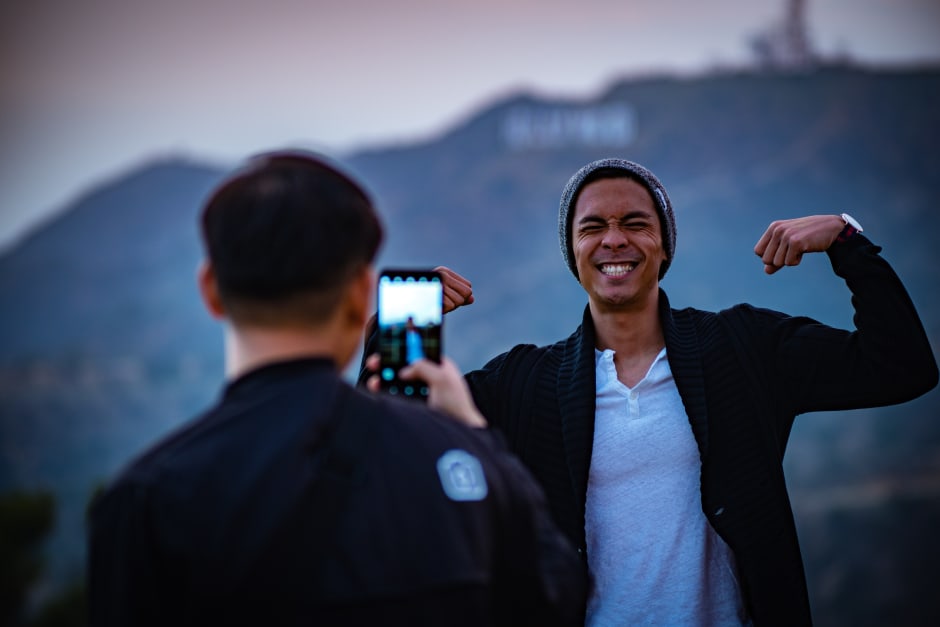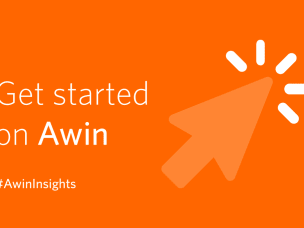TikTok - Everything you need to know about the world’s fastest growing social media network
Written by Emma Sharp on 15 minute read
What is TikTok? And why is it so popular? Consider this your guide to everything you should know about the world’s fastest-growing social media network.

If you’ve heard the phrase ‘TikTok’ coming out of the mouths of the Millenials in your life lately, it’s no surprise. The new social media platform was the most downloaded app globally in 2018. So why don’t you really know what it is yet?
Well, it’s focus demographic is the young, and the really young. So this could be why. It’s also just on the cusp of hitting the universal mainstream, but we’d say probably isn’t quite there yet. This is possibly due to the content style adopted on the platform.
Take this as your beginner's guide as we explore everything you need to know about TikTok.
What is TikTok?
Though it sounds shockingly similar, the TikTok you’ve been hearing about lately surprisingly has nothing to do with the pop track released by Ke$ha in 2009.
Available on both iOS and Andriod, the new app taking the world by storm is a short-form video sharing platform, aimed mainly at people aged 24 and under.
Recent analytics have shown that 66% of users on TikTok are under the age of 30 (and around 60% are female.) Having said this, if your demographic is outside of this bracket, there’s no need to worry. These statistics still mean 34% of people on the platform are older than the age of 30, so there’s lots of potential to reach your desired audience. Also, as the app ages, so will the audience - meaning a stronghold in this space from an earlier standpoint will assist you in being more prominent with your target demographic, should TikTok remain relevant for years to come.
You may also hear about Chinese app Douyin in the same sentence as TikTok. This is because Douyin is essentially the exact same app, just on a different server. Douyin was launched in China in 2016, before the launch of TikTok, and complies with the strict Chinese censorship laws. Now over one-third of the Chinese population uses the app. You can’t switch between the apps, as Douyin isn’t available outside China and vice versa. Nor can you post between the apps if you happen to manage to create an account for both.
It’s already widespread among the celebrity community, with users including Reese Witherspoon, Cardi B and Post Malone. However, it’s also been known to actually create celebrities too.
Famously Lil Nas X, known for his song ‘Old Town Road’ that recently broke the record for the longest time a track has held the number one spot on Billboard Hot 100, got his big break using TikTok. As a 19-year-old Lil Nas X knew the potential of the app and actively used it to promote his song, creating meme-like content using the track for several months. After being awarded MTV Music Awards Song of the Year 2019, a press release issued by TikTok in conjunction with Lil Nas X stated: "Lil Nas X's success story highlights how talented artists are using TikTok to grow a fanbase and promote their music."
"TikTok helped me change my life," added Lil Nas X, "TikTok brought my song to several different audiences at once."
Who created TikTok?
It was launched in 2017 by Chinese company ByteDance, who has since been named the world’s most valuable startup at $75b. TikTok absorbed the already prevalent music-focused app Musical.ly in August 2018, taking on its comical, casual, lip-sync-heavy content style and snowballing the social platform’s popularity.
Because Musical.ly’s driver was music, this lead to TikTok videos having a concentration of dance videos. From here, the progression to dance challenges, lip sync challenges and now general hashtag challenges has seen the main usage of the app evolve quickly over its short existence.
What does it do?
Like many other social media platforms at present, TikTok is a video-driven social media platform. The difference is, there is no alternative form of content such as text-based posts or static images. Users watch, upload, edit and share short videos (either 15 seconds or 60 seconds) and connect with likeminded individuals around the world. Similarly to other platforms, users can use and search hashtags to find common content.
Currently most of the usage of TikTok is contained within the app, meaning links to external pages or sites haven’t been possible. That is until Kroger launched a back to school hashtag challenge using influencers on the platform. Not only could users participate in the challenge, to #TransformUrDorm with Kroger products, but in a platform first, users could also click on an additional discover tab which allowed them to buy the products from the Kroger website, still within the TikTok app.
Though this feature isn’t available for widespread use just yet, it’s beta testing leads us to believe the future of the app is shoppable, making it an ideal place for affiliate marketers to thrive.
How do you use TikTok?
When a user logs in to the app there are two pages listed at the top. These are ‘following’ and ‘for you.’ As the name suggests, ‘following’ displays the other user accounts you are following on the app. The ‘for you’ page appears similar to the format of the ‘explore’ feed on Instagram, but is actually one of the ways ByteDance claims its app stands out from other forms of social media. Though Facebook and Instagram are moving in a similar direction, TikTok’s ‘for you’ page presents content solely based on AI gathered by your personal usage on and off the app.
So, if you’re watching a lot of make up tutorials, movie stars and animal videos expect to see Will Smith having his make up done while holding a puppy. Ok, so it’s not that accurate yet, but as a user continues to explore the platform the more information the AI gathers and the more accurate the content display on ‘for you’ becomes.
On both pages the app autoplays videos, showing only the focus video at one time then rolling on to the next once it has been watched through. This, combined with the extremely short length of most content, means that if a user is engaged, they’re far more likely to watch to the end of a video than they are on other platforms, where there are many forms of distraction. In turn, this means a greater retention rate for creators and brands. TikTok has not yet confirmed that viewer retention rate is a success metric within the platform, but it is assumed this will be playing part in the algorithm.
Along the bottom of the screen users will see several navigation buttons: home, discover, create, inbox and me.
When creating, there are a wide variety of filters, stickers, GIFs and effects to choose from and combine. Filters are conveniently categorized to assist those who are overwhelmed by variety to simplify the creative process. Remember that while filters are available to put on your video before or after recording, some effects are only available beforehand.
The Nine Camera Split, Reverse and Timewarp effects are all great examples of popular effects and filters. On the other hand, it has been mentioned by several experienced younger TikTok-ers that excessive use of stickers is only something ‘old people’ who are trying to be cool on the platform use. You’ve been warned.
Music is also categorized into playlists and genres to ensure people can find the perfect tune to accompany their creation.
Why is TikTok so popular?
TikTok is easy to use. The interface is simple and often so is the content style. The app’s ability to let its users quickly and easily edit videos, without having to use a third-party app or program, is also certainly one of the reasons its popularity has soared.
The tools are reasonably intuitive, meaning even the least experienced of video creators can produce something with maximum impact, through minimal effort. Additional functionality that makes recording simple like a built-in flash, hands-free recording, timers and the ability to record in segments (including deleting separate segments you aren’t happy with) add to this ease of creation.
Though the app’s original emphasis was music, the audience appears to have led the platform away from this focus toward more comical, attention-grabbing content. Having said this, music still seems to be a way to help your content stand out. Each video requires some sort of sound and it has been suggested by popular TikTok-ers that using ‘trending sounds’ or songs in the background of your videos is a good way to get your content featured on the coveted ‘for you’ page.
Surprisingly ‘react’ and or duet style videos have a similar virality probability to original posted content. These styles of content are essentially where you respond to another user’s video or take the opportunity to add to it in some way, in video form.
The AI driven ‘for you’ page makes the experience feel personalized. This page is also conveniently not time stamped, meaning you can quite easily end up down a rabbit hole of content, losing significant chunks of time.
Many prominent TikTok-ers also state that content that is more frequently enjoyed is less complicated, too. Popular TikTok-er Jayde Vincent, who rose to over 1.2m followers on the platform in just a few short months, told us, “I think TikTok is so popular because it’s a place where you get to be you, and be organic, and authentic. The music aspect of the app is what really makes it unique from the others as well. It’s so fun hearing all the songs, and fun sounds!”
The video content that often becomes most popular is generally not ‘overproduced’ and has almost an amateur style to it. Snippets depicting the reality of users’ lives, as opposed to the highly stylized and ‘perfect’ content that is commonly seen on other visual platforms like Instagram and YouTube.
And it’s clearly addictive. Over 1b videos are viewed on TikTok every day. The average person spends 52 minutes per day on the app – more than any other social media platform. We’re talking average here though, there are many that spend FAR more. It’s easy to see why.
Can brands use TikTok?
Absolutely, brands can and already are using TikTok to target their desired, or future desired audience. A pitch deck supposedly from TikTok themselves that was recently leaked by Ad Age suggests that using the platform to advertise officially comes with a hefty price tag, the ability for a brand to succeed on a platform that is currently in its infancy is probably significantly higher than on other social media platforms. You just need to connect with the audience.
There are some excellent examples of brands and organizations you may not typically expect managing to do this on TikTok. For example, the Washington Post is a newspaper, and as such not an organization the majority of the youth of the world probably care too heavily about at this stage in their lives. However, their relatable, humorous, office-based content keeps going viral and has opened up an entirely new demographic for the media outlet... ademographic who, in years to come, may very well remember the name Washington Post when they are deciding where to source their news from while sitting at their desk jobs.
What are the benefits of TikTok?
Right now, it’s free, it’s easy and where a lot of the global digital audience is playing. By May 2019 it had been download over 1.2b times on App Store and Google Play. Getting an early foot in the door could be very beneficial on the platform.
Organic views are currently quite easy to come by if your audience finds the content entertaining. Yes, it’s just another platform to create content for, but as we have explored, the content style doesn’t need to be as well-produced and perfected to be successful. Even if you’re not ready to start creating content for the platform yet, it’s a smart move to download the app and secure your personal or business name.
When it comes to content creation, remember resourcing. Jayde also claims one of the keys to success is to post content on TikTok every day. If you’re a business or brand, who will be creating and monitoring for you? It’s good to keep in mind that this is a reasonably constant task due to the volume of content being created and could be quite time-consuming.
TikTok vs. Snapchat
There are multiple differences between Snapchat and TikTok. Snapchat has the functionality to be image or video content. Also, the Snapchat app’s original main selling point was that the extremely short-form video content disappeared after a period of time (10 seconds or below.) This is not the case with TikTok, though the content is still short form, it’s as permanent as a user would like it to be.
Though there are an evolving range of facial filters available on Snapchat, there are far more ways to personalize your content on TikTok, something that TikTok users clearly enjoy.
You can publicly like and comment on TikTok videos, which is not a function on Snapchat. Similarly, you can ‘duet’ with other TikTok users, which further increases the virality of the original content.
Hashtags that are used on TikTok can be searched, easily connecting users interested in the same content or topics. Not only does this make it easier for users to be discovered, but it’s also a platform that can be utilized easily by brands. The same cannot be said for Snapchat.
Is TikTok safe to use?
There are two main safety concerns with using TikTok currently: How much information is it monitoring- what are the privacy policies - and is it a safe space for children given the average age of a user and it’s popularity with younger generations?
How much information is TikTok gathering about you?
As with many other platforms, the answer is: it’s collecting a lot of behavioral information about you. The privacy policy states that TikTok and it’s business partners, “collect information about your online activities through Cookies. We link your contact or subscriber information with your activity on our Platform across all your devices, using your email or other log in or device information. These third parties may use this information to display advertisements on our Platform and elsewhere online tailored to your interests, preferences, and characteristics.”
Having said this, the policy also states that, “You may be able to refuse or disable Cookies by adjusting your browser settings.” However, “if you choose to refuse, disable, or delete Cookies, some of the functionality of the Platform may no longer be available to you.” In particular, this information is used to tailor the content on the ‘for you’ page.
Unfortunately, there are limited ways to control what content comes across the screen if this is deemed inappropriate for any user, not just a child.
Is TikTok safe for children?
You must be 13 years of age or older to create an account. Accounts have privacy settings like having a private account or only letting friends (followers and connections within the app) view your account.
These restrictions can be taken even further, says Jayde, “You can easily disable comments or duets. You can even disable certain words from being commented. You have to be over 16 to live stream.”
Most importantly, unlike other forms of social media, users are only able to communicate through private messaging if they are friends on the app. This adds a level of protection for younger users and parents can more readily control the boundaries of a child’s usage. Also messaging is strictly text only; no images or videos can be sent, nor any external app links.
Is it here to stay?
Could it be a one hit wonder? Absolutely. But many people thought the same of Facebook, when MySpace was king, and subsequently Instagram, in the reign of Facebook. Those who hadn’t jumped on board in the beginning always wished they had. We can’t predict the future, but if TikTok is here to stay, it would benefit to be one of those in it from the start.
And with TikTok’s parent company ByteDance being named the most valuable startup in the world, surpassing even the likes of Uber, it seems the investment industry certainly thinks there’s longevity in 15-second videos made predominantly by teenagers in their bedrooms.
Facebook also looks like it’s concerned about TikTok’s growing popularity among the teenage market. It very quietly launched an app called Lasso, to run as a competitor to TikTok despite just launching it’s Facebook ‘story’ functionality in 2017.
As with all other popular platforms, the use of TikTok is likely to develop and change. Undoubtedly, advertising will become more and more prominent,with a pay-to-play style formula potentially hindering brands’ ability to get ahead for free. This could see the further rise of the app, or fall. Only time will tell on this front.
Conclusion
Even though no one can say whether or not TikTok is going to become a permanent feature in the world of social media, there’s no doubt it’s currently a prominent one. No other social media app has seen a rise as widespread this fast.
Other social media platforms are taking note that their audience or potential audience is gravitating towards the pull of TikTok, as are big name brands and organizations. The masses are flocking.
If it doesn’t appeal to you, that’s fair enough. It certainly doesn’t contain hard-hitting news or information-rich content yet, but that’s not to say it won’t in the future. Regardless of whether dance-offs, pet videos and makeup vloggers are your thing, it appears that TikTok is working for the youth of today. If you want to stay relevant this is as relevant as it gets in 2019 and certainly looks as though it will be into 2020.



